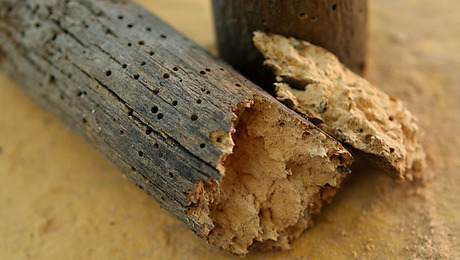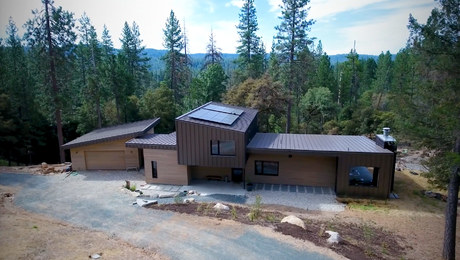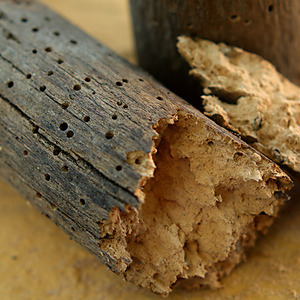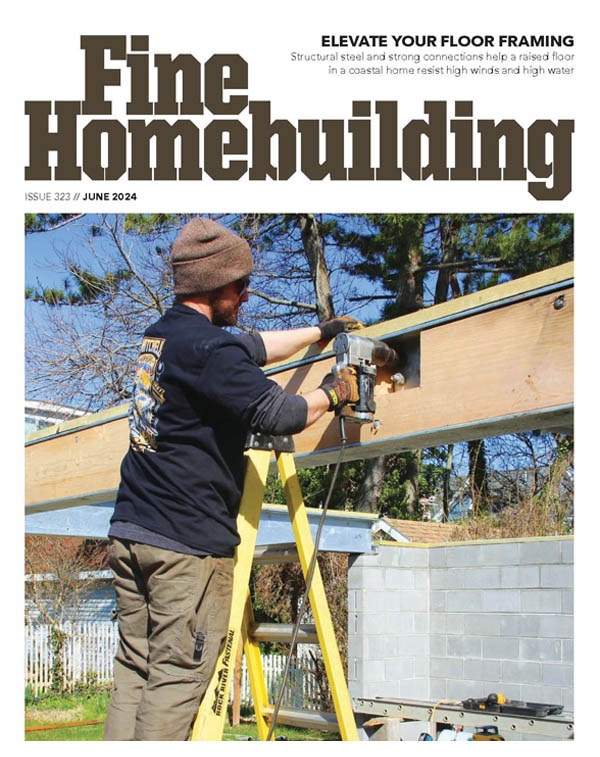Latest in Telephone wiring systems

http://www.texasescapes.com/DelbertTrew/Barbed-Wire-Telephones.htm
“In this day of seemingly unlimited telephone services, it’s hard to believe we once used barbed wire to carry our message. Laura V. Hamner, noted Panhandle historian, wrote of such telephone service in her book “Light and Hitch.” Various pioneers in early day Claude and Gruver told of nearby ranchers installing telephones using the top wire of barbed wire fences for the telephone line. — In 1949, when we purchased our Alenreed ranch, a telephone line ran eight miles to the south, some of it still using barbed wire.
At first, few realized the signal would be diminished during rainy weather because the wire was stapled directly to the post, causing grounding when wet.
As the theory of insulators became understood, the most clever, most innovative cowboys used every conceivable type of device as insulators to suspend the wire. I have found leather straps folded around wire and nailed to the posts, whiskey bottle necks installed over big nails, snuff bottles, corn cobs, pieces of inner-tube wrapped around the wire and short straps of tire holding telephone wires to the post.”
” Eavesdroppers seemed to be the biggest problem with all early day communications using a party line. No secret or business was safe or private. When you raised the receiver and cranked out your call, clicks could be heard up and down the line as all close to a phone listened in.
Any chore, no matter how important, could wait when the phone rang. Families fought for the listening position after a ring. We had a neighbor woman confined to a wheel chair who seemed able to stand when the telephone rang. When invitations to a party went out over the line, everyone who eavesdropped showed up.
Craig Morris, our early day ranch foreman, now deceased, and who cussed a lot, would crank out his call, wait until everyone on the party line picked up their receiver, then announce “All you old biddies better hang up cause I’m gonna talk about castrating a (expletive deleted) stud horse.” The hang-up clicks followed quickly – allowing a bit of privacy.”
http://www.inc.com/magazine/19970615/1416.html
“One such system operated in the isolated northeastern corner of Montana in the mid-1920s. Its developer was a farmer with “some electrical training,” who was called upon by neighbors to fashion a barbed-wire phone system. “There are miles and miles of pasture fences . . . and in many localities these corner each other at section junctions,” reported the farmer, who identified himself only as H.B.S. in the region’s farm journal.
The trickiest part of such installations was joining wires, whether between properties or across gaps in a farmer’s own fencing. Yet the system was supremely flexible. To bridge a gap between adjacent fences while allowing passage, one could employ several methods: bury insulated cable underground, or sink two tall poles into the earth and string them together with lead-covered insulated wire (the materials cost only $4), or even use barbed wire for the overhead crossing–as long as the splices were made with great care. (“Where the wires are looped, connect across a piece of wire and twist tightly on each side . . . and put more turns on than you think are necessary.”) Soldering, however, worked best.
Insulation was another challenge. Porcelain knobs worked well as insulators on fence posts to prevent the wires from short-circuiting in the rain. For the delicate business of bringing the wires into the home, farmers often threaded them through porcelain tubes. These were single-wire grounded systems–as H.B.S. noted, “the earth serving as the other circuit wire”–rather then the more expensive two-wire systems. To ensure that the circuit was properly connected with the earth, phone customers typically connected the end of the circuit to a six-foot galvanized pole that had been hammered into the ground. The farsighted H.B.S. even installed knife switches at regular intervals for circuit troubleshooting. These gave him the ability to shut down segments of the network to isolate faults on the line and thus locate them more quickly.”
Now I have never seen bobwire phone lines.
But I remember seening lines in KY, IN, and OH that where run of the top of fences and trees. And where there where neither they could just cut off a limb and stick in the ground with a glass insulator on a side branch.


















Replies
I don't remember any phone lines run on the fence but the memory of the party line!
Had a neighbor lady next door, her daughter lived about 5 houses down, they would get on the phone and tie it up for hours on end.There were 8 kids in my family so demand for the phone was high.
This neighbor lady and her daughter spoke Czech so spying wasn't an option!
Doug
We had a party line when I was very young. My father got the first private line out there because he got a business priority on it. Annoyed the other neighbors who were waiting for a private line.My father grew up in west texas -- he described the fence telephone systems to me but I never saw one either.Plan for tomorrow but live today!
I remember seeing phone lines strung along fence posts and trees when I was a kid, around my folk's cabin in northern Minnesota. When that line was updated I climbed up the trees and snagged all the glass insulators, I think I still have a box full of them around here someplace. Around here they were blue-green glass, made by a company named Hemingray. I've seen porcelain ones used in other parts of the country.
View Image
The glass ones like you have are what I have seen mostly.But I think, not too many brain cells left, that where a porclain "donut". Nail through the center and the wire wraps around the outside.
I saw a guy use a cable tv coax to power his yard light with once. Used the center for power and used the stranded jacket for a neutral. He thought he was a genius.
Who Dares Wins!
Story I once heard was that some savvy farmers and ranchers would tote along a lineman's phone, sometimes cobbled together from parts from the local radio store or mail order.
These portable phones would be hooked into the phone lines at any accessible point. This was more than seventy years before cell phones. As I heard it the people would shinny up a pole. The lines being at fence-top height would make this much more convenient.
Given the distances of the farther reaches of some of these farms and ranches from the house I suspect such a system would have significant advantages. Even if the portable units were sometimes unreliable and the sound quality poor.